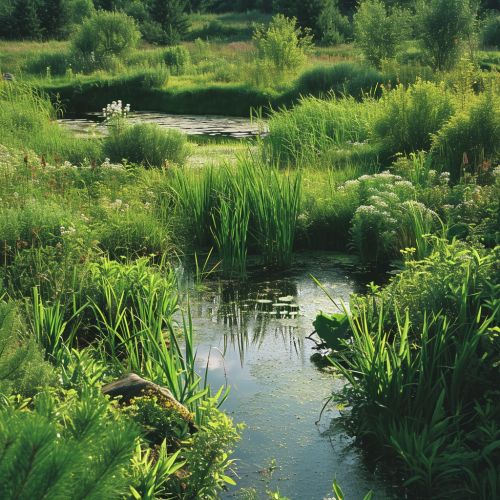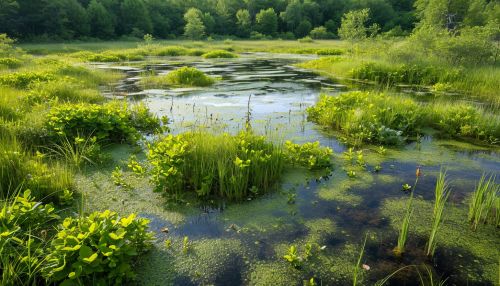Rich fens
Overview
Rich fens are a type of wetland ecosystem characterized by high mineral content and a diverse array of plant and animal species. They are typically alkaline or neutral in nature due to the presence of calcium and magnesium ions. Rich fens are globally distributed and can be found in various climatic zones, from the arctic regions to the tropics. They play a crucial role in biodiversity conservation, carbon sequestration, and water purification.


Formation and Characteristics
Rich fens form over long periods, often thousands of years, through the accumulation of peat, a type of organic matter. The process of peat formation begins with the growth of specialized plants such as mosses in waterlogged conditions. These plants die and decompose slowly due to the lack of oxygen, forming peat. Over time, this peat layer becomes thicker and forms a fen.
The term "rich" in rich fens refers to the high mineral content, particularly calcium and magnesium, in the water and soil. These minerals are supplied by groundwater, which in many cases has traveled through limestone or other mineral-rich substrates. The high mineral content distinguishes rich fens from other types of fens, which are typically more acidic and nutrient-poor.
Rich fens are typically alkaline or neutral due to the buffering effect of the minerals. This pH condition, along with the high mineral content, supports a diverse array of plant and animal species, many of which are specially adapted to these conditions.
Biodiversity
Rich fens are hotspots of biodiversity, supporting a wide variety of plant and animal species. The plant community in rich fens is typically dominated by grasses, sedges, and mosses, with a variety of other plant species also present. These include several species of orchids, which are often indicators of rich fens.
In addition to plants, rich fens also support a diverse array of animal species. These include a variety of invertebrates such as insects and mollusks, as well as birds and mammals. Many of these species are specially adapted to the conditions in rich fens and cannot survive in other habitats.
Ecological Importance
Rich fens play a crucial role in maintaining ecological balance. They act as natural water filters, purifying water by removing pollutants and excess nutrients. They also play a significant role in carbon sequestration, helping to mitigate climate change. Furthermore, rich fens are important for biodiversity conservation, providing habitat for a wide variety of species.
Threats and Conservation
Despite their ecological importance, rich fens are under threat from various human activities. These include drainage for agriculture, peat extraction, and pollution. These activities can lead to the loss of rich fens and the biodiversity they support.
Conservation of rich fens involves protecting existing sites, restoring degraded sites, and promoting sustainable use. This can involve legal protection, management practices such as controlled burning or grazing, and public education.
